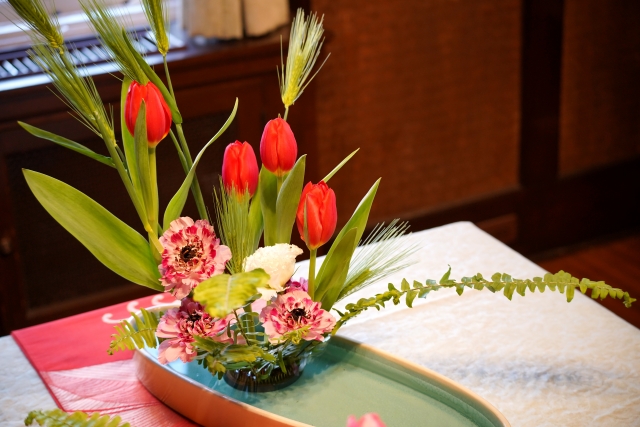Have you ever felt a sense of calm wash over you when looking at flowers? Or experienced a mood boost after receiving a beautiful bouquet? These experiences aren’t just coincidences—they’re backed by scientific research. Flowers have remarkable healing powers that can positively influence both our mental and physical wellbeing. This article explores the science-backed benefits of flower therapy, how flowers affect us through our five senses, and practical ways to incorporate floral elements into your daily life for enhanced wellbeing.
In Japan, the relationship between humans and flowers has deep cultural roots, with traditions dating back centuries. From the ancient art of ikebana (flower arrangement) to the modern practice of “forest bathing,” the Japanese approach to nature therapy offers unique insights into how flowers can heal our modern, stress-filled lives.
- The Science Behind Flower Therapy: Research-Backed Evidence
- 5 Ways Flowers Impact Our Mental and Physical Health
- Experiencing Flower Therapy Through the Five Senses
- 7 Ways to Incorporate Flowers Into Your Daily Life
- The Therapeutic Effects of Different Flower Colors
- Japanese Flower Traditions: Unique Cultural Perspectives
- Summary: Nurturing Mind and Body Through Flower Power
The Science Behind Flower Therapy: Research-Backed Evidence
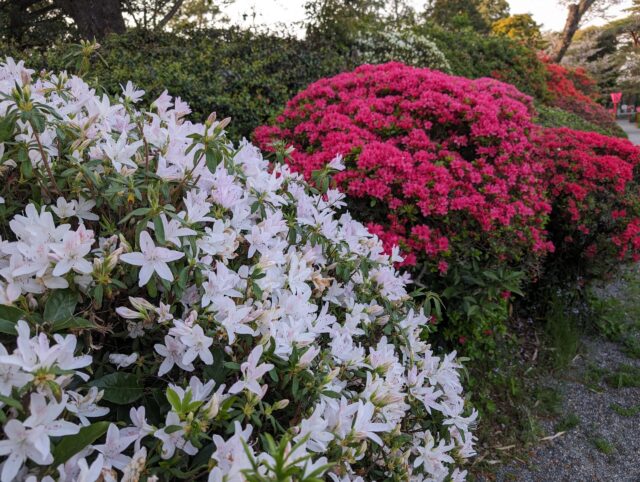
Neurological Response to Flowers
The healing effects of flowers aren’t just a pleasant myth—they’re scientifically proven. A groundbreaking study by researchers at the National Agriculture and Food Research Organization (NARO) and University of Tsukuba in Japan demonstrated that simply viewing images of flowers can significantly reduce stress levels.
In this experiment, participants were first shown stress-inducing unpleasant images. When they were subsequently shown images of flowers, researchers observed:
- A decrease in negative emotions (fear and disgust)
- A 3.4% reduction in elevated blood pressure
- A 21% reduction in stress hormone (cortisol) levels
Brain activity monitoring revealed that viewing flowers suppressed activity in the amygdala, the brain region responsible for generating emotions. This demonstrates that flowers help our brains divert attention away from stress, creating what scientists call a “distraction effect” that eases both mental and physical stress responses.
The “Happiness Hormones” Connection
When we see or receive flowers, our bodies release three crucial substances often called “happiness hormones”:
| Hormone | Function | Effect |
|---|---|---|
| Dopamine | Motivation hormone | Increases drive and pleasure feelings |
| Oxytocin | Bonding hormone | Enhances feelings of happiness and affection |
| Serotonin | Mood-regulating hormone | Calms the mind and stabilizes emotions |
Research from the Center for Environment, Health and Field Sciences at Chiba University further confirms that people in flower-filled rooms experience reduced fatigue, tension, and anxiety compared to those in rooms without flowers.
5 Ways Flowers Impact Our Mental and Physical Health

1. Relaxation and Mental Health Enhancement
When viewing flowers, our brains produce more alpha waves, which are associated with relaxation states. As a result:
- Heart rate stabilizes
- Breathing deepens
- Mind becomes calmer
This is particularly beneficial in today’s high-stress world, where mental health challenges are increasingly common.
2. Improved Concentration and Creativity
Research from Rutgers University in the United States has shown that having flowers in offices or workspaces enhances both concentration and creativity. The visual refreshment provided by flowers helps the brain generate new ideas more easily. This makes flowers an excellent addition to home offices, especially with the rise in remote work.
3. Enhanced Recovery and Immune Function
Remarkably, viewing flowers can boost healing and recovery powers. Studies have found that hospital patients with flowers in their rooms often recover more quickly than those without. The colors and natural life force of flowers appear to support our body’s healing mechanisms and strengthen overall health.
4. Improved Communication and Relationships
Spaces adorned with flowers tend to foster more active communication between people. Flowers create natural conversation starters and help smooth social interactions. Simply placing flowers on a table when hosting family or friends can enhance conversation flow and create a more pleasant atmosphere.
5. Enhanced Spatial Quality and Comfort
A single flower arrangement can dramatically improve the quality of any space. Even the simplest room gains elegance and warmth with the addition of flowers. They silently communicate that “this place is cared for,” making both homes and workplaces more inviting and comfortable for visitors.
Experiencing Flower Therapy Through the Five Senses
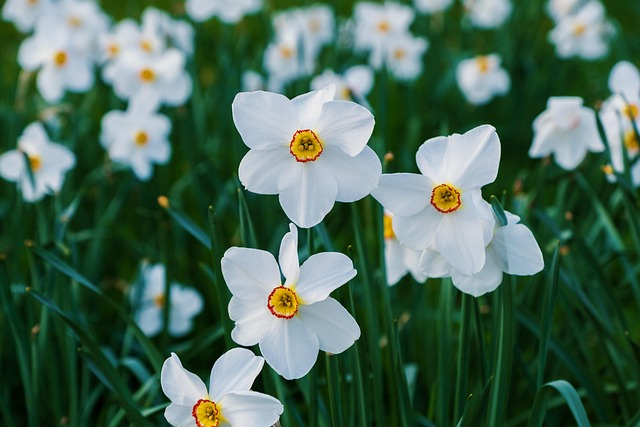
Visual Impact: Colors and Shapes
The primary attraction of flowers lies in their beautiful colors and forms. Color psychology has proven that different colors influence our moods and emotions. The visual information from flowers is processed in our brains, affecting our emotions and autonomic nervous system according to specific colors and shapes.
Takayama Flower Festival in Gifu Prefecture and the Hitachi Seaside Park with its blue nemophila flowers are perfect examples of how Japan showcases breathtaking flower displays that can transform our mood simply through visual impact.
Olfactory Effects: Scents and the Brain
Flower fragrances are closely linked to memory. When we smell certain flowers, they can instantly transport us to specific memories or places. This happens because scent information travels directly to the parts of the brain that govern emotions and memories.
Flowers with pronounced fragrances, such as roses, lavender, and jasmine, are particularly effective for therapeutic purposes. In Japan, the traditional kodo (incense ceremony) often incorporates floral elements to create a meditative, healing atmosphere.
Tactile Healing: The Touch of Petals and Leaves
The sensation of touching flower petals and leaves can be surprisingly comforting. Recent studies indicate that physical contact with plants can actually reduce stress hormone secretion. This explains why horticultural therapy is so effective for mental health.
In Japanese culture, the mindful practice of arranging flowers in ikebana involves carefully handling each stem and bloom, creating a meditative experience that connects the practitioner with nature through touch.
Auditory and Gustatory Experiences: Complete Flower Immersion
While flowers themselves don’t make sounds, garden environments filled with flowers create gentle soundscapes—leaves rustling in the wind or insects buzzing around blooms. In Japan, traditional gardens are designed with these subtle auditory experiences in mind.
For the sense of taste, edible flowers (known as hanagoyomi in Japanese cuisine) such as chrysanthemum petals, herb blossoms, and rose petals can be incorporated into salads, desserts, and traditional Japanese dishes, allowing us to literally “taste” the benefits of flowers.
7 Ways to Incorporate Flowers Into Your Daily Life
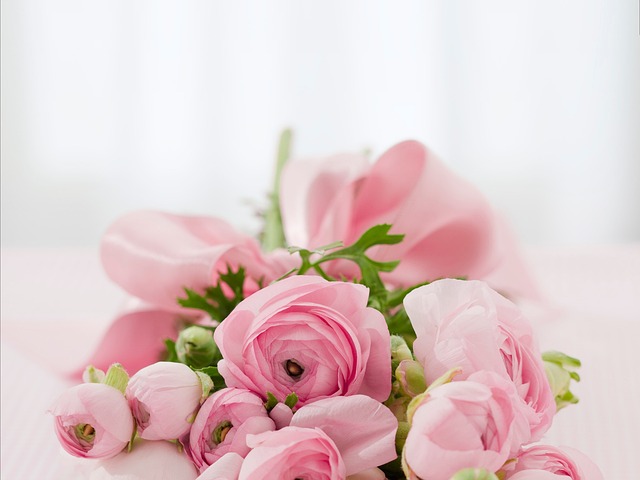
Basic Techniques for Displaying Cut Flowers at Home
Starting with flowers at home is simple. Here are beginner-friendly steps:
- Vase selection: Clear glass vases are easiest for beginners
- Water level: Fill to about 1/3 of the stem length
- Stem cutting: Cut stems at an angle for better water absorption
- Leaf management: Remove leaves that would be submerged in water
Tips for making flowers last longer:
- Change water daily if possible
- Add floral preservative to extend freshness
- Avoid direct sunlight and heat sources
For beginners, start with easy-to-handle flowers like tulips or carnations. Japanese one-stem vase arrangements (ichirin-zashi) can be particularly effective for showcasing a single beautiful bloom without complicated arranging.
Effective Ways to Introduce Flowers to Your Workspace
Having flowers at your desk can boost work efficiency. For workspaces with limited room:
- Place a single flower in a mini vase
- Choose succulents or cacti that require minimal care
- Consider preserved or dried flowers that need no maintenance
In Japanese office culture, even the smallest floral addition is thought to improve work atmosphere and productivity, reflecting the concept of kaizen (continuous improvement) applied to workspace design.
Seasonal Flower Selection Guide
Choosing seasonal flowers allows you to feel more connected to nature’s cycles. Here’s a seasonal guide with Japanese favorites included:
Spring: Cherry blossoms, tulips, sweet peas, pansies
Summer: Sunflowers, hydrangeas, lilies, gladiolus
Autumn: Cosmos, dahlias, chrysanthemums, gentians
Winter: Cyclamen, poinsettias, narcissus, camellias
In Japan, the hanami (flower viewing) tradition celebrates seasonal changes, particularly cherry blossoms in spring and autumn leaves later in the year. This cultural practice reminds us to pause and appreciate nature’s fleeting beauty.
Simple Approaches to Flower Arrangement
Flower arrangement doesn’t need to be complicated. Ultra-simple arrangement tips:
- Use multiple stems of the same flower type
- Create variation in height
- Match the arrangement to your vase shape
In contrast to elaborate Western arrangements, Japanese ikebana often emphasizes minimalism, focusing on a few carefully selected stems to create asymmetrical balance and celebrate imperfection through the concept of wabi-sabi.
Basic Flower Growing for Beginners
Growing flowers can make the care process itself a healing ritual. Simple cultivation tips:
- Most flowers prefer bright locations
- Water when the soil surface feels dry
- Apply fertilizer when plants show signs of weakening
The joy of growing flowers comes from observing daily changes—buds swelling, flowers opening, and eventually forming seeds. This observation of life cycles creates a meditative, peaceful experience.
Marigolds, petunias, and pansies are excellent choices for beginners. In Japan, even small apartment dwellers often maintain mini gardens on balconies, showing that space limitations need not prevent you from growing flowers.
Visiting Floral Landscapes: Making the Most of Flower Destinations
Another way to experience flower therapy is by visiting places where flowers bloom abundantly. Seasonal destinations include:
Spring: Cherry blossom spots, tulip fields
Summer: Lavender fields, sunflower fields
Autumn: Cosmos fields, autumn foliage locations
Winter: Early-blooming plum gardens, greenhouse botanical gardens
Japan is famous for its flower viewing destinations, such as the Fuji Shibazakura Festival (pink moss phlox fields with Mt. Fuji in the background) or the Ashikaga Flower Park (with its magnificent wisteria tunnels). These immersive environments create powerful therapeutic experiences that can momentarily erase daily worries.
Flowers as Gifts: The Joy of Giving and Receiving
Giving flowers creates happiness for both giver and receiver. This phenomenon, known as the “gift economy,” enriches human relationships. Flowers as gifts:
- Express gratitude
- Enhance celebratory occasions
- Provide encouragement
- Create lasting memories
In Japan, the tradition of omiyage (bringing gifts when returning from a journey) often includes local floral specialties or flower-themed items, demonstrating the universal appeal of floral gifts across cultures.
The Therapeutic Effects of Different Flower Colors

Red and Pink Flowers: Energy and Vitality
Red flowers (roses, gerberas, dahlias) can:
- Stimulate motivation
- Promote circulation
- Provide energy
Red flowers activate both mind and body. They’re perfect for morning environments or when you need motivation.
Pink flowers (tulips, sweet peas, carnations) can:
- Evoke gentleness
- Promote female hormone secretion
- Calm the mind
Pink represents love and tenderness, creating both relaxation and pleasant emotions.
Blue and Purple Flowers: Calming and Focus-Enhancing
Blue flowers (delphinium, hydrangea, gentian) can:
- Calm the mind
- Lower blood pressure
- Enhance concentration
Blue flowers have gentle sedative effects, making them ideal for work or study environments.
Purple flowers (lavender, clematis, allium) can:
- Alleviate stress
- Stabilize emotions
- Stimulate creativity
While associated with nobility, purple flowers actually promote deep relaxation—perfect for meditation or contemplation.
Yellow and Orange Flowers: Brightness and Positivity
Yellow flowers (sunflowers, mimosa, yellow roses) can:
- Brighten mood
- Enhance communication abilities
- Provide energy
Yellow represents the sun—embodying energy, brightness, and hope. They’re particularly effective when feeling down or before social interactions.
Orange flowers (marigolds, poppies, orange roses) can:
- Enhance sociability
- Stimulate creativity
- Promote positive thinking
Orange flowers create a social atmosphere, making them ideal for entertaining spaces.
White and Green Flowers: Purifying and Balancing
White flowers (baby’s breath, lilies, dahlias) can:
- Clear the mind
- Evoke pure feelings
- Make spaces appear more organized
White flowers have purifying effects on the mind, perfect for new beginnings or when clear thinking is needed.
Green flowers and foliage (anthuriums, bells, green carnations) can:
- Refresh mind and body
- Reduce stress
- Restore balance
Green represents nature itself. It’s easy on the eyes even with prolonged viewing and calms the mind, making it ideal for workspaces.
Japanese Flower Traditions: Unique Cultural Perspectives
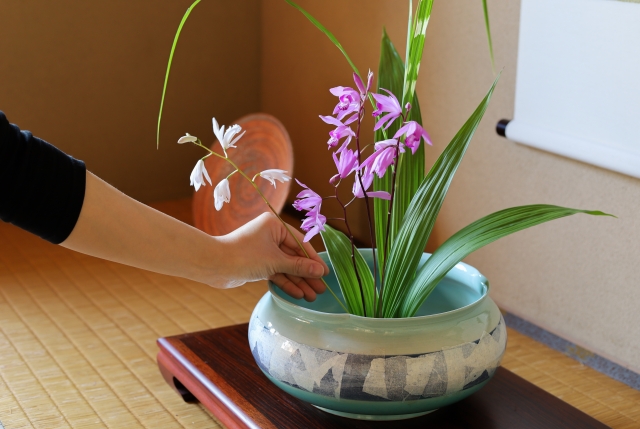
Ikebana: The Ancient Art of Flower Arrangement
Ikebana, literally “living flowers,” is a traditional Japanese art form dating back over 600 years. Unlike Western arrangements that emphasize abundance, ikebana focuses on minimalism and symbolic meaning. The practice itself is considered meditative and healing, emphasizing harmony, balance, and the beauty found in imperfection.
The three main schools—Ikenobo, Sogetsu, and Ohara—each offer unique approaches to flower arrangement, but all share a focus on mindfulness that makes ikebana a form of moving meditation.
Hanakotoba: The Japanese Language of Flowers
Similar to the Victorian language of flowers, hanakotoba assigns specific meanings to different blooms. In Japanese culture, gifting flowers isn’t just aesthetically pleasing—it’s a form of communication. For example:
- Red camellia: Love
- Cherry blossoms: Renewal and the impermanence of life
- Chrysanthemum: Longevity and imperial symbolism
- Morning glory: Brief love or summer affection
Understanding hanakotoba adds an extra dimension to flower appreciation and can make flower gifts even more meaningful.
Kado: The Way of Flowers as a Spiritual Path
Beyond mere decoration, flowers in Japanese tradition represent a pathway to spiritual growth. Kado (“the way of flowers”) is considered one of the traditional Japanese arts of refinement, alongside tea ceremony and calligraphy.
Practitioners believe that through mindful interaction with flowers, one can cultivate inner peace and harmony with nature. This spiritual dimension of flower appreciation is uniquely emphasized in Japanese culture.
Seasonal Celebrations and Flower Viewing
Japan’s calendar is marked by seasonal flower celebrations. The most famous is hanami (cherry blossom viewing), but equally important are:
- Ume-mi (plum blossom viewing) in late winter
- Fuji-mi (wisteria viewing) in spring
- Kiku-mi (chrysanthemum viewing) in autumn
These traditions encourage people to pause regular activities and consciously appreciate natural beauty—a form of nationwide flower therapy that has been practiced for centuries.
Summary: Nurturing Mind and Body Through Flower Power
As we’ve discovered, flowers offer scientifically proven healing effects that positively influence both our psychological and physical wellbeing. From the Japanese perspective, the therapeutic power of flowers goes beyond mere decoration—it represents a mindful way of connecting with nature and finding harmony in our increasingly digital lives.
Key points to remember about incorporating flower therapy into your daily life:
- Engage all five senses: See, smell, touch, and sometimes even taste flowers for a complete experience
- Daily integration: Display flowers at home and work, grow them, or visit flower-rich locations
- Choose by color: Select flower colors based on your mood and purpose
- Share the joy: Give and receive flowers to spread happiness
The Japanese approach to flower appreciation—with its emphasis on mindfulness, seasonal awareness, and finding beauty in simplicity—offers valuable lessons for managing stress in modern life. Whether through the precise artistry of ikebana or the jubilant community celebration of hanami, Japanese flower traditions remind us that even brief moments with flowers can significantly enhance our quality of life.
You don’t need to surround yourself with flowers every day to experience their benefits. Even a weekly interaction with flowers, or simply placing a single bloom in your space, can begin to create positive effects. Start with whatever feels manageable—perhaps a single flower in a small vase—and allow the natural healing power of flowers to enhance your daily wellbeing.
Flowers are not luxury items reserved for special occasions, but powerful allies in creating a healthier, more balanced everyday life. From the perspective of Japanese culture, where flower appreciation has been refined over centuries, embracing flower therapy is a simple yet profound way to nurture both mind and body.
